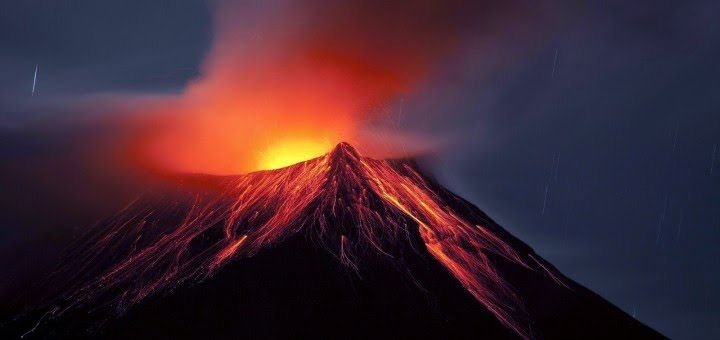Two years after the assassination of Julius Caesar in 44 BC, written sources speak of famine, disease, and cold winter across the Mediterranean. A new study has found that these rapid atmospheric changes were fueled by the volcanic eruption at the other end of the planet in the wake of Alaska’s Okmok eruption on the other side of the planet.
Researchers also say that catastrophic explosions played a significant role in major historical changes, such as the fall of the Roman Republic in the Mediterranean and the end of the Ptolemaic Kingdom in Egypt. Published in the Journal of the Proceedings of the National Academy of Sciences, an international team of climate scientists and historians has looked at ice cores around the world, which have acted as atmospheric layers and climate records for centuries. They then compared them to a cave-forming climate record in northeastern China with tree-ring-based climate records in the White Mountains of Scandinavia, Austria, and California.
Together, they reveal the presence of major atmospheric changes that occurred in 43 BC and randomized the following two years. Further geochemical analysis of the volcanic ash found in the ice of Greenland suggests that the source of the play was the second Okmok eruption that occurred in early 43 BC, which was so catastrophic that it erupted a 10 km wide (6.2 miles) crater around the volcano.
Joe McConnell, the lead study author from the Desert Research Institute in Nevada, told IFLScience, “We geochemically fingerprinted the ash and compared the fingerprint to a library of volcanic ash, suggesting that this period originated in the first century BC. The match with Okmok II Ash was great, so there’s no doubt it came from the volcano.”
McConnell added, “There was speculation based on the estimated time that it could be the historically recorded eruption of Mt Etna or the massive eruption of Apocalypse in Nicaragua. The eruption was relatively small at the beginning of 44 BCE, but tree-ring-based records of summer temperatures show extreme cold at 43 and 42 BC, not 44 BC.”
It is well known that large volcanic eruptions can have a profound effect on the Earth’s climate by creating ash and gases in the atmosphere, which in turn affects the greenhouse effect. In the case of this explosion, the effects were brief but sharp.
The northern hemisphere has been somewhat cooler for the past 2,500 years, two years after the second eruption of Okmok, with temperatures averaging 6 degrees Celsius (13 degrees Fahrenheit). Rainfall has also increased dramatically, with summer rainfall levels hovering around 50-120 percent above normal across southern Europe. In the autumn months, rainfall was usually above 400 percent.
This is not the first time that climate change has been linked to the eventual collapse of civilization. Of course, the collapse of the big world power is almost always a complex combination of inter-woven factors; A smoking gun is never.
With this in mind, the researchers argued that the brief climate changes around this time period were likely to be another nail in the coffin of both the Ptolemaic Kingdom of Egypt and the Roman Republic that gave birth to the Roman Empire.
Andrew Wilson, a classical archaeologist from the University Of Oxford, UK, said in a statement, “These findings give credibility to reports of cold, famine, food crisis and disease described by ancient sources.”In the Mediterranean region, this wet and extremely cold situation during the agriculturally important spring in the autumn season has probably led to a reduction in crop yields and the associated supply problems during this period of ongoing political upheaval.”
Yale University historian Joe Manning, added, “Particularly striking was the severity of the Nile flood failure at the time of the Okmok eruption, and the famine and disease that was reported in Egyptian sources.” “At an important moment in history, the effects of climate change were a severe shock to an already stressed society.”














